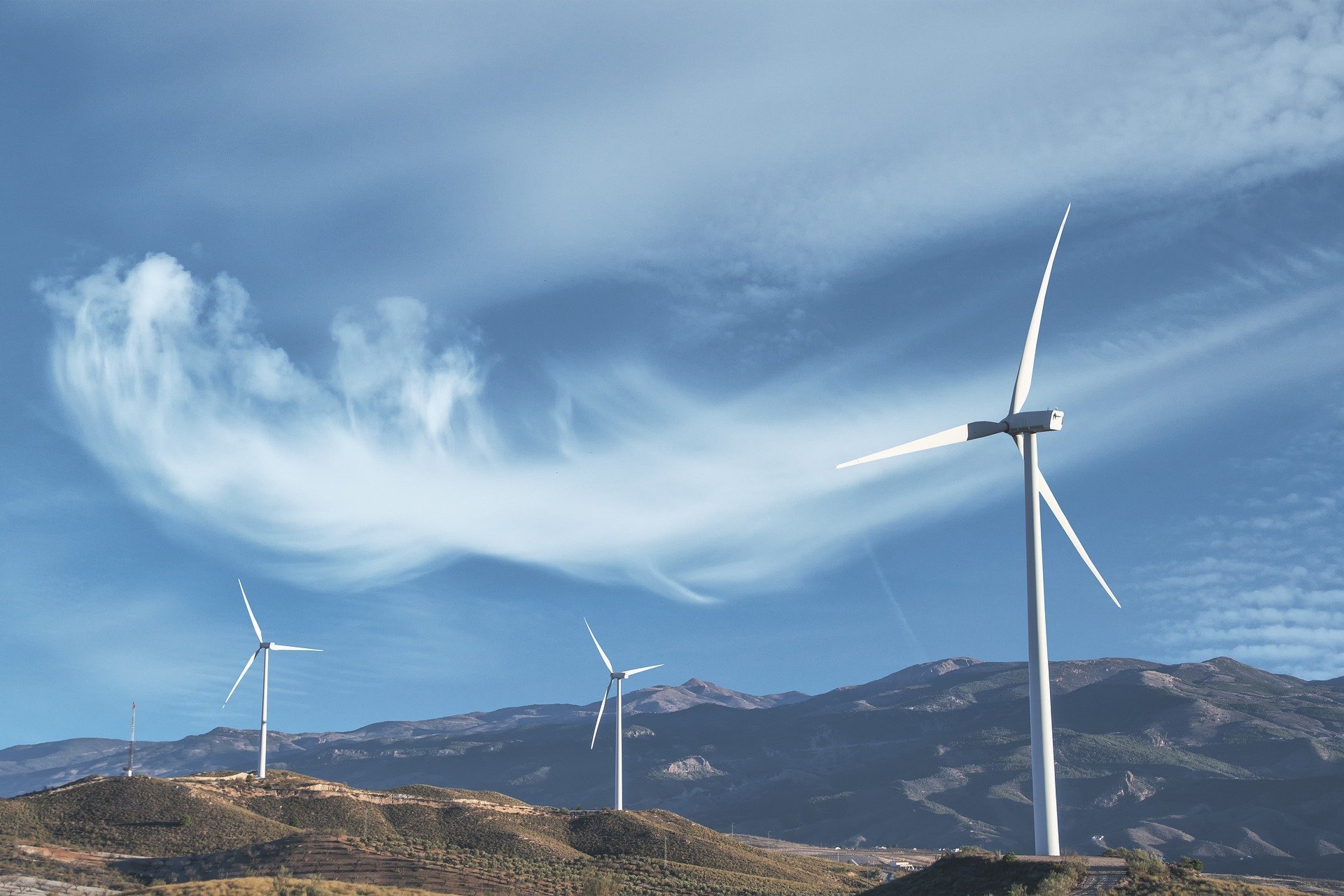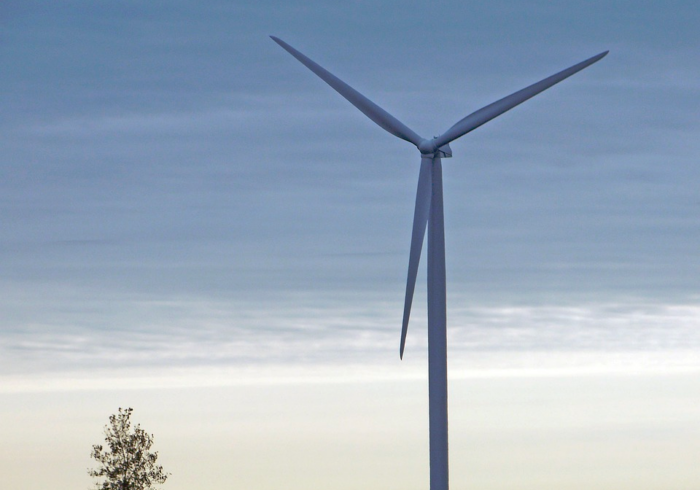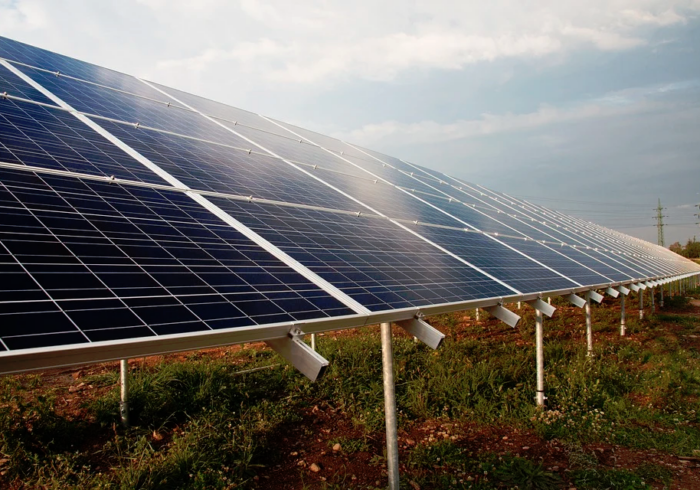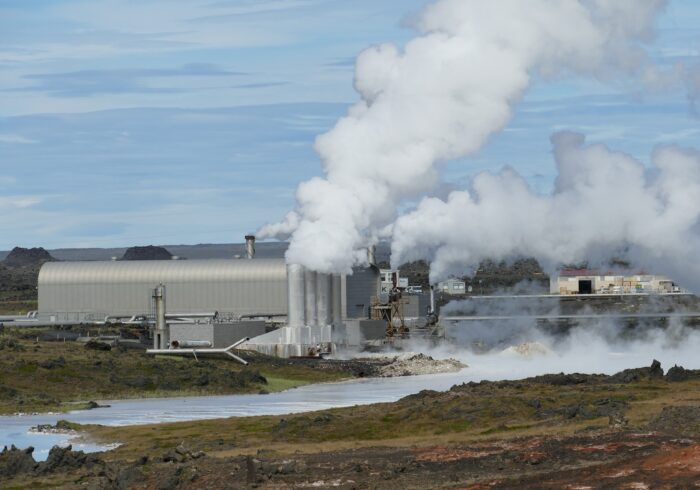The use of wind as a driving force is a long tradition. Windmills were used for grinding flour, sawmills) and as a pumping or water pumping station. Modern windmills generate electricity from wind power. They first turn the kinetic energy of the wind into mechanical energy of the rotor, and then into electrical energy.
Wind power is one of the fastest growing renewable energy technologies. According to the latest IRENA data, the world’s onshore and offshore wind power generation capacity has increased nearly 75-fold over the past two decades, from 7.5 GW in 1997 to about 564 GW by 2018.
Due to the uneven composition of the ground, terrain, and thickness of the atmospheric layer, the Sun heats the Earth’s surface with varying degrees of intensity. The surface heated by the Sun transmits heat to the air masses above it. Because air density depends on its temperature, zones with different atmospheric pressures are formed (because warm air is lighter and cold air is heavier). As the hot air rises vertically to the Earth’s surface, the cooler air moves along the Earth (horizontally) to fill the resulting void.
Thus, let’s define “Wind” as the process of pressure equalization by moving air masses from a high-pressure region to a low-pressure region, born as a result of the uneven heating of the Earth’s surface.
Wind energy – along with the energy of falling water – is one of the most readily available and used since ancient times a type of transformed energy of the Sun. People began using this type of energy centuries ago, when the first windmills appeared, which pumped water or threshed grain. The term “Wind Energy” can be defined as the energy by which the movement of air masses (wind) is converted into other types of energy.
Most likely, the first mechanism that used wind energy was a simple device with a vertical axis of rotation of the blades, which was used to grind grain. Around 200 B.C., the first mills with a horizontal axis of rotation appeared in Persia. A similar primitive type of windmill is still in use today in many Mediterranean countries.
The first written description of a device to perform mechanical work using the wind is the work of Heron, who described the principle of the windmill in the 1st century AD.
In medieval Europe, windmills began to be built after the Crusaders completed their crusades and returned from Central Asia.
In the tenth century, many cities in Europe began to build windmills using a hydraulic motor.
As early as in the XIV century all over Europe began to use windmills for irrigation of fields in arid areas, for pumping water from the lands, enclosed by dams, as well as for drainage of swamps and lakes.
At the beginning of the 20th century, interest in using wind power for industrial and agricultural purposes grew sharply. In 1890 first wind stations were built in Denmark, and by 1908 (18 years later) there were 72 of them with capacity from 5 to 25 kilowatt each.
By the beginning of XX century in Russian Empire about 2.5 thousand windmills with total capacity of 1 million kW were functioning.
In 1931 not far from Yalta the largest at that time wind power plant with total capacity of about 100 kW was built, and later a project for a 5000 kW unit was developed. But to implement and run the project completely failed.
From the 1940s to the 1970s there were unsuccessful attempts to use wind energy in large-scale power generation. The reason for this was the intensive construction of powerful thermal, hydro and nuclear power plants, as well as distribution power grids to ensure a weather-independent power supply. The low price of produced oil also contributed to this.
Renewed interest in wind power, as well as many other alternative forms of energy (particularly solar), began in the 1970s after the oil crisis. The tipping point clearly showed the strong dependence of many countries and their economies on imported oil, which has led to a search for possible options to reduce this dependence.
Currently, wind power is a rapidly growing and promising industry. By the beginning of 2015, the installed capacity of all wind turbines in the world amounted to 369 GW.



